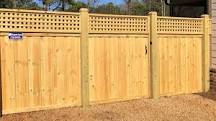Beach raking, while it may seem like a good way to keep our sandy shores looking pristine, actually comes with a bunch of problems. These issues include disrupting local ecosystems, harming wildlife, and negatively impacting beach aesthetics. Let’s dive into the nitty-gritty of why beach raking might not be the best idea.
Disruption of Local Ecosystems
One of the biggest problems with beach raking is that it messes with local ecosystems. Beaches aren’t just pretty places for sunbathers; they’re complex habitats for various organisms. When rakes are used, they can:
Damage Natural Habitats
Raking can destroy the nests of shorebirds and other wildlife that lay their eggs in the sand. This can lead to a decline in bird populations and disrupt the balance of the ecosystem.
Remove Essential Organic Material
The organic debris that gets raked up—like seaweed and driftwood—plays a crucial role in maintaining beach health. It provides nutrients to the sand and supports various forms of marine life. Without it, the beach can become less vibrant and more prone to erosion.
Harm to Wildlife
Speaking of wildlife, beach raking can be pretty rough on our furry and feathered friends.
Disturbance During Nesting Season
Many species use beaches for nesting, especially during certain times of the year. Raking can disturb these nests, leading to abandoned eggs or even direct harm to the chicks.
Impact on Marine Life
Not only do birds get affected, but marine life does too. For instance, small crabs and other critters that live in the sand can be harmed or displaced when their homes are disturbed by rakes.
Negative Impact on Beach Aesthetics
While some folks love a perfectly manicured beach, many beachgoers actually prefer a more natural look.
Unnatural Appearance
Raked beaches often look overly groomed and less inviting. The natural beauty of driftwood and seaweed adds character and charm that many people appreciate.
Loss of Beach Experience
A pristine beach might sound nice, but it can take away from the authentic beach experience. People enjoy spotting seashells, seaweed, and other natural elements that tell the story of the ocean.
Conclusion
In summary, while beach raking aims to keep our beaches clean and tidy, it brings along a host of problems that can disrupt ecosystems, harm wildlife, and alter the natural beauty we all cherish. It’s essential to consider these factors when deciding how best to maintain our beautiful shores.
FAQ
Is beach raking necessary?
Not necessarily! While some argue it keeps beaches clean for visitors, many experts believe leaving beaches in their natural state is better for local ecosystems.
What alternatives exist to beach raking?
Alternatives include community clean-up days where volunteers pick up trash without disturbing the sand or using less invasive methods like hand-picking debris.
How can I help protect my local beach?
You can help by educating others about the impacts of beach raking, participating in local conservation efforts, and advocating for more eco-friendly beach maintenance practices.







